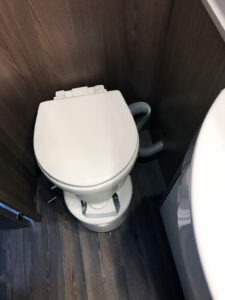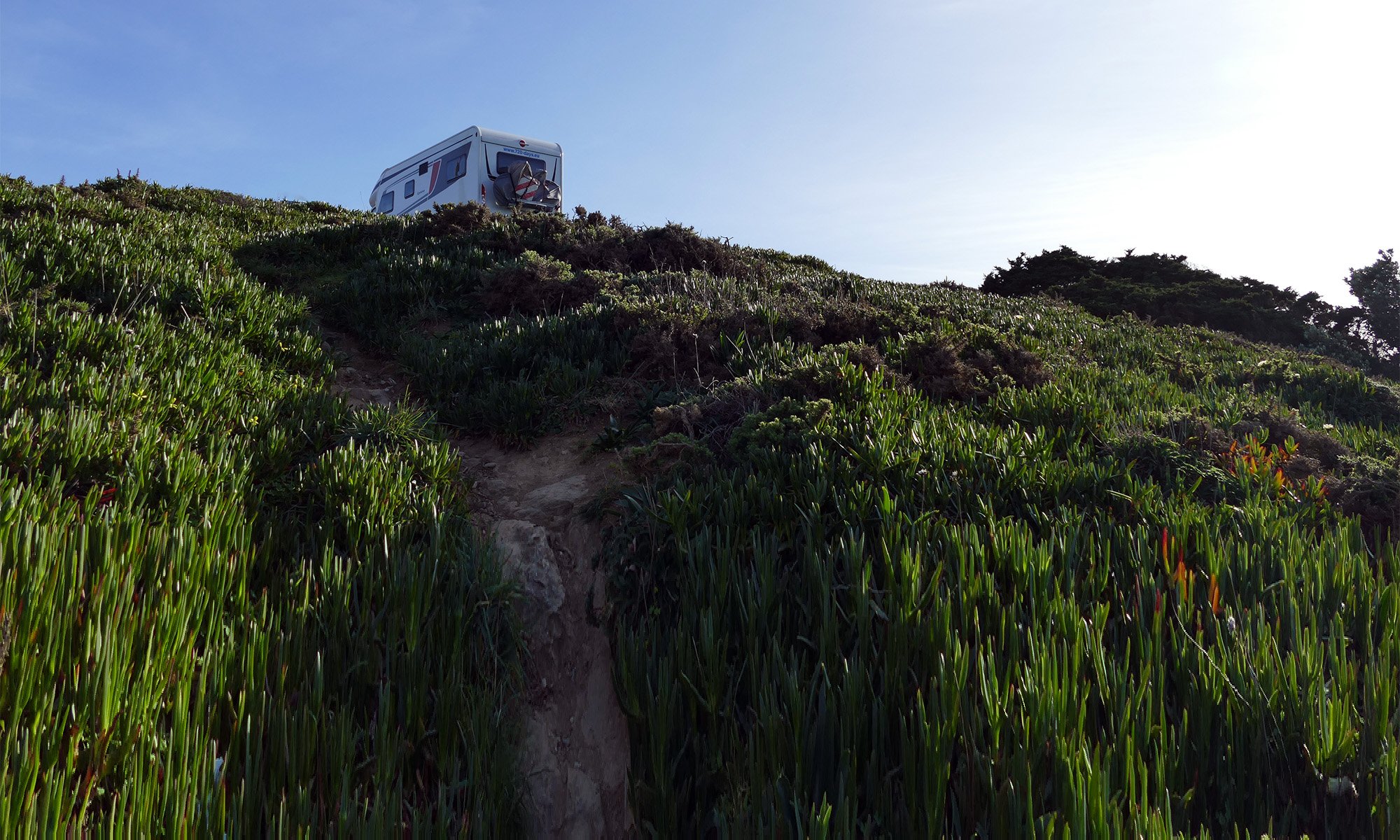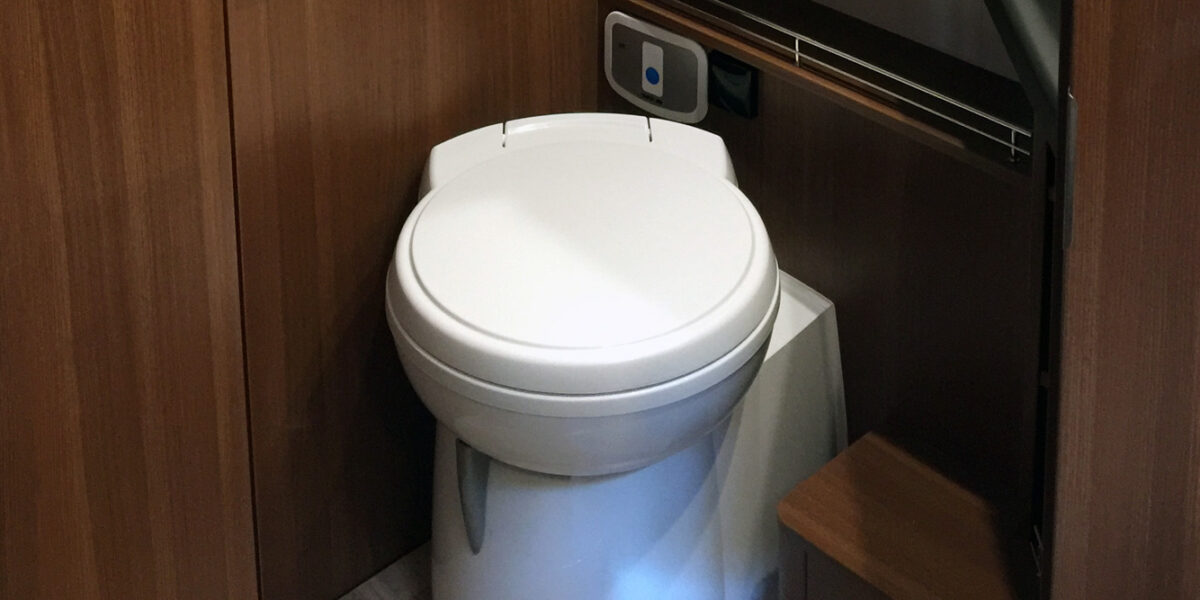By default, there are cassette toilets installed in motorhomes and caravans. However, nowadays composting toilets are an interesting alternative.
The classic: Cassette toilet
The principle of cassette toilets is easy. At first sight, you have a (usually a little smaller) toilet just like home. You have a bowl with a seat on top and a water flush. When flushing, the excrements are flushed into a separate waste water tank, the cassette. Inside the cassette are chemicals – either liquid or tabs. That way, the chemical substance will repress smells, dissolves excrements and paper to a certain extend and covers everything with an unnatural color. The content of the cassette will then be discharged in special chemical waste stations. Usually, you don’t get in touch with the excrements. However, you need a little experience to clean the cassette with a water hose without contaminating yourself, the cassette or the hose.
The advantage of this system is that they combine the feeling like home with a closed compact system. Due to the chemicals you don’t smell the excrements but it has an unpleasant penetrating chemical odor. Additionally, the chemicals can harm the environment and need to be disposed separately.
The alternative: Composting toilet
Since we don’t like the negative environmental effects and despise the smell we decided to look for alternatives. The solution is a composting toilet.
When you search for composting toilets on the internet you’ll find quite a lot of DIY guides. At first that gave us the impression that they might not be suitable for us. Finally, we found two companies that offer composting toilets: Nature’s Head and Air Head. The models of these companies are comparable to a standard WC in terms of quality. Also in terms of looks and usability they are pretty similar to the at-home version.
Our favorite is actually Nature’s Head because we like better how they integrated the liquids tank and we also liked the form better (which is definitely subjective 😉 ).
Update: Due to our space constraints, we ordered the Air Head with a marine seat.
Update 2: We got so used to our Air Head that we actually admire the form now and would rather purchase that again even if we had more space.
Principle composting toilet

Composting toilets work with two tanks – a liquid tank (in front) and a solid tank (in the back). By separating the liquid from the solids no smell emerges. We use the composting toilet basically like a normal toilet.
In contrast to the cassette toilets we don’t need any chemicals. When setting up the toilet, we just add (hydrated) coco fibre to the solids tank. After each use of the solids tank, we need to turn the crank handle to mix the excrements with the coco fibre. By the way, you don’t have to see that – you can close the lid that covers the solid tank if not in use. A small fan with a hose connector to the outside of the motorhome sucks in a little air constantly. In the tank there are (harmless) bacteria that turn the excrements and the coco fibre into humus.
Emptying and cleaning the composting toilet
The solids tank need to be emptied if it is full. Which according to the sellers is about every 8 weeks (Update: Our own experience is more like 5-6 weeks). It just needs about a day without use first. Then you’ll have plain soil to dispose. That you can dispose into the general waste or on your compost heap (if you want to use for your garden, it needs to stay on the compost heap for at least for one year according to German hygiene law).
The liquid tank needs to be emptied about every 2-3 days and can be disposed like grey water into the sewerage.
After emptying the solid tank you need to refill it with new coco fiber (slightly humid). You should not clean the toilet intensively as you would kill the bacteria that turn everything into humus. The liquid tank just needs some vinegar to reduce deposits.
Those who feel a little unsettled regarding emptying a composting toilet might want to see the interesting and entertaining video by Gone with the Wynns:
Advantages composting toilet
Just like cassette toilets you have an at-home feeling while using it. Additionally, you don’t need any water supply. Emptying it is much less often necessary and independent of service stations. There are no smells neither due to excrements nor due to chemicals. And finally, composting toilets are 100% environmentally friendly.


